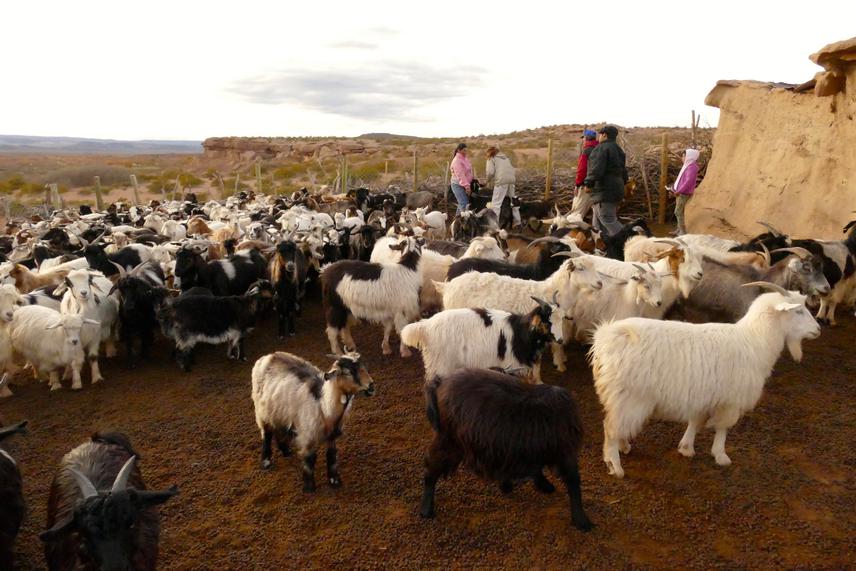Cristina Nuñez Godoy
Other projects
16 Aug 2019
Which Program Will Halt Deforestation? Landowners' Preferences for Forest Conservation Programs in the Gran Chaco of Argentina
23 Feb 2022
Identifying Socio-Environmental Conditions That Promote Adoption of Conservation vs. Land-Use PES Plans with Limited Biodiversity Value in the Chaco Forest
Understand what drives goat herder participation in a Wildlife-Friendly Certification production of cashmere and how to increase demand options for wildlife-friendly products.

Leveraging market forces to empower local communities to conserve nature can have long-lasting effects on the conservation of wild landscapes like Patagonia (Southern Argentina). Patagonian ecosystems house unique biodiversity and traditional livestock herders. Arguably the main threat to this system is human-wildlife conflicts. Here, biodiversity is intimately linked to local people (crianceros) whose traditional livelihood systems focus on small-scale herding of goats and sheep produce cashmere, wool, and mohair. Ranches are often overstocked and attract native predators, causing an increase in contact rates between wild cats and the overabundant prey (livestock). Crianceros kill animals that threaten their subsistence goat husbandry, including the endangered, Andean Mountain Cat (Leopardus jacobita).
Current conservation strategies focus on providing tangible benefits to crianceros to prevent Andean cat extinction through Wildlife-Friendly Certification of cashmere. Conservation efforts have focused on providing benefits to herders to avoid population decline and avert extinction of wild cats. In 2011, cashmere herders obtained the Wildlife Friendly Certification from the Wildlife Friendly Enterprise Network. This certification “promotes products and practices that conserve threatened wildlife, while contributing to the economic vitality of rural communities”. Participants commit to not kill native carnivores in return for technical assistance to improve their herds and cashmere production. As a result, some herders have been able to maintain and even improve their goat-centred income. This strategy has been successful at increasing market access of wildlife-friendly cashmere and decreasing hunting of Andean Cats and Pumas. Nonetheless, this arrangement remains fragile, and we intend to solidify it. Future efforts to continue this market-based strategy need to understand what drives criancero participation and how to increase demand options for wildlife-friendly products. Understanding motivation behind participation and increasing market size for wildlife-friendly cashmere could spark grassroots level incentives to conserve wild cats.
Through this research, we will provide key data for a community-based project that attempts to concurrently improve livelihoods and conserve wildlife. The Wildlife Conservation Society (WCS) has spearheaded this initiative since 2011 and our findings will raise the odds of success and continuance of this wildlife-friendly initiative. Our first research question intends to provide useful information for creating project incentives that retain current herders as well as incorporate others. Our second research question aims to generate insights and guidance regarding buyer behavior and preferences to more effectively target buyers, improve products and services, and expand WCS project directors’ knowledge base in the field of markets.